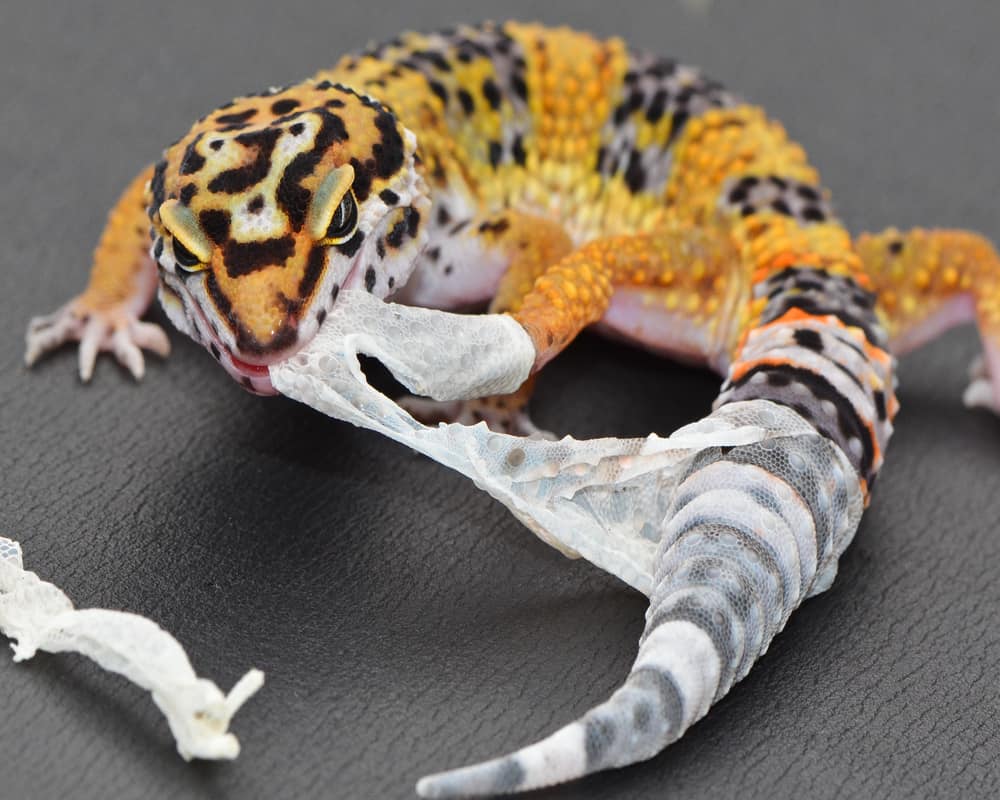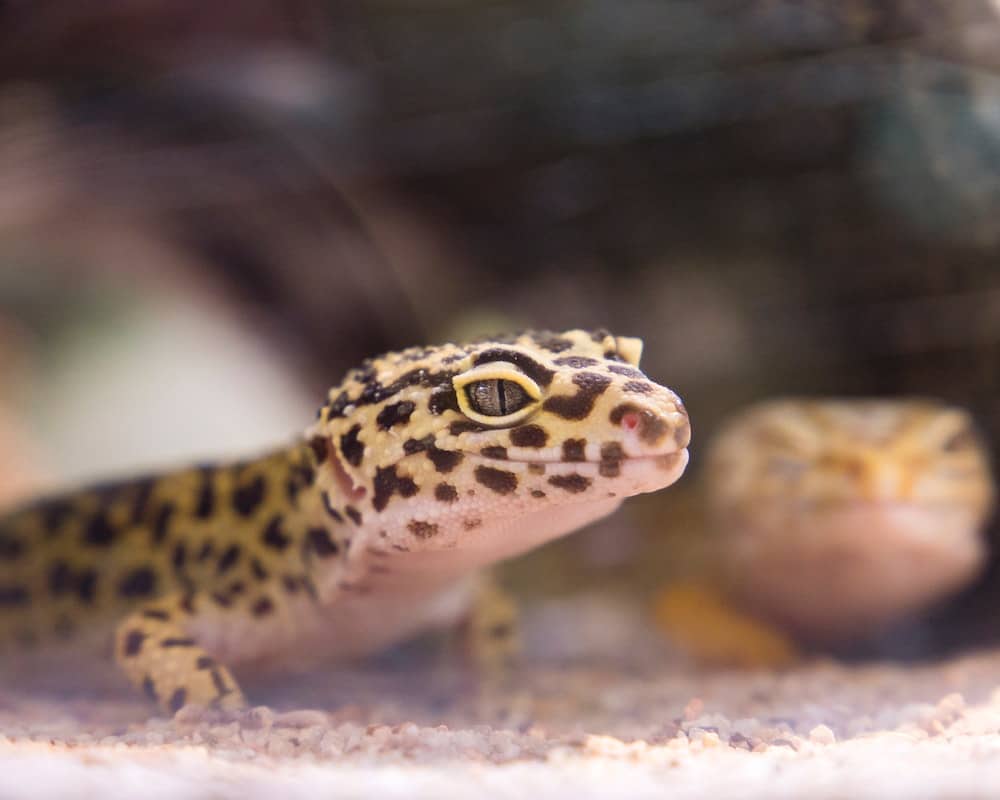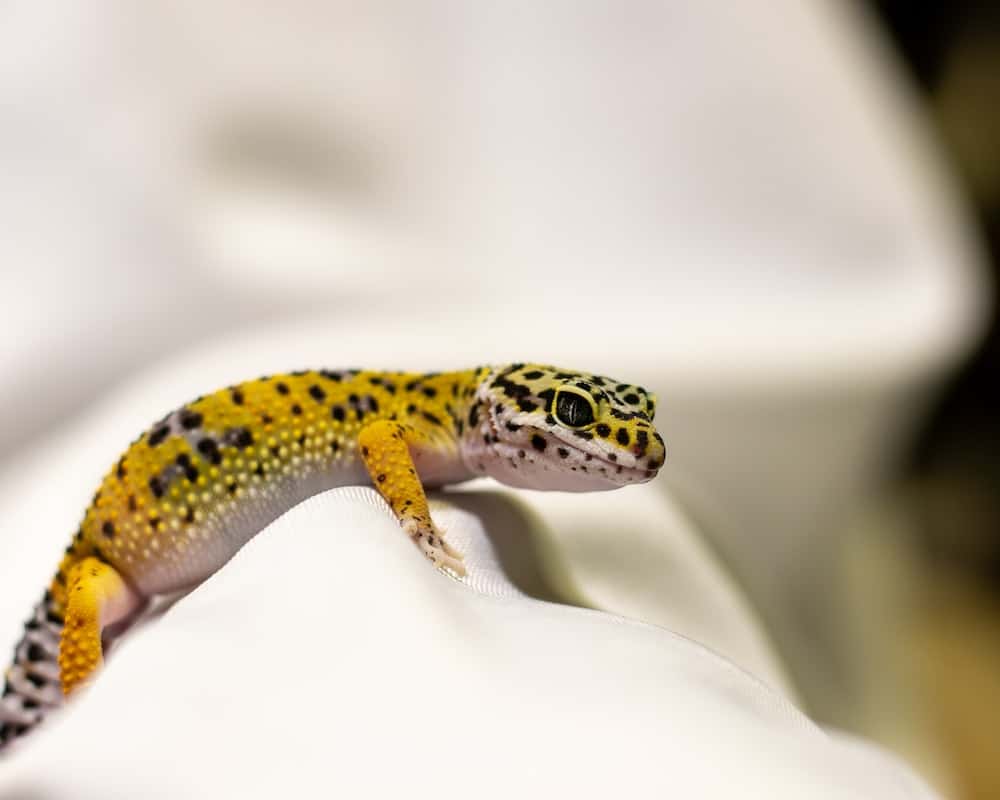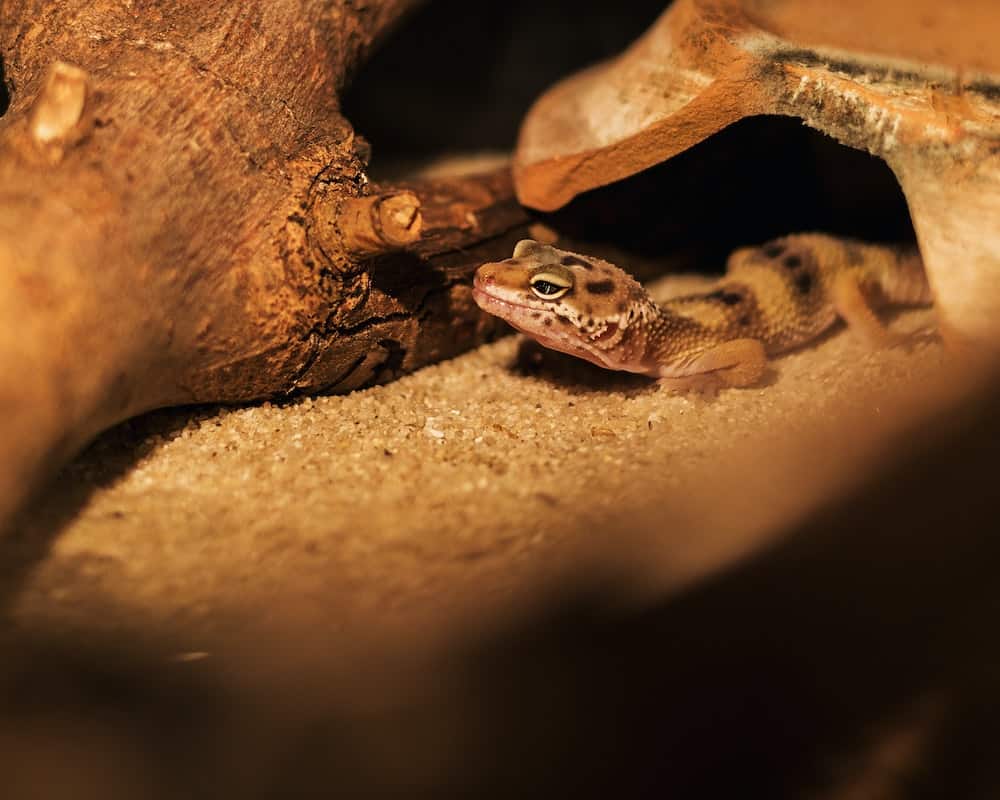Leopard geckos go through frequent shedding, especially when they grow older. As a leopard gecko pet owner, you must have seen them undergo the shedding process. You might have also noticed them eat their shed.
If you did notice, there is nothing to worry about as leopard geckos eat their shed, which is quite normal. Usually, leopard geckos eat their shed because they need food after shedding. Shedding is a tiring process; they need nutrients in their body, and the shed contains certain nutrients. At times they eat their shed out of survival instinct.
The reasons for eating their shed can vary, but it is normal.
Why Do Leopard Geckos Eat Their Shed Skin?
As you know already, leopard geckos shed when they are growing. They shed because leopard geckos grow throughout their lives, and their skin can not stretch or grow along with them.
They need a new layer of skin to protect them. That is why the old skin peels off from their body to make space for a new layer of skin. This process keeps continuing as long as they are growing.
You must have also noticed that they shed every two or three weeks and sometimes once a week. How often they shed depends on the rate at which they are growing.
Some might take an hour to shed, whereas some leopard geckos can take up an entire day. Now, they exert a lot of energy and effort when they are going through the shedding process. When they remove their old skin, they feel hungry, so they eat their skin or shed.
You should also know that leopard geckos consume less food when they are about to shed, and eating their shed is equal to a quick meal. Their shed contains nutrients that help your leopard geckos feel recharged after shedding.
They can generate a new protective solid layer when they eat their shed.
One reason is that they are hungry, while the other is because of their survival instinct. Leopard geckos usually live in the wild and must protect themselves. Since there are predators in the wild, leopard geckos eat their shed to leave no traces for their predators to track and attack them.
Check out this video of a leopard gecko eating its shed.
Do All Leopard Geckos Eat Their Shed?
Most leopard geckos eat their shed, but you do not have to worry if your leopard gecko is not eating the shed.
As mentioned, leopard geckos eat their skin after shedding to regain nutrients and energy. As long as they get the nutrients they need from their food and eat well, it is okay if they do not eat their shed.
You must look out for them when shedding and check if they have the energy required for the shedding process.
Keep an eye on your leopard gecko after shedding. If your gecko is not eating even after a week, it is better to visit your vet and know why.
Can I Help My Leopard Gecko During Their Shedding Process?
Most of the time, leopard geckos do not face any issues during shedding. There might be instances where they can face complications when shedding, for example, their skin getting stuck and not coming off their body. During such cases, you can help your leopard gecko.
So, there are some things you can do to help your leopard gecko during its shedding process:
Gentle Rubbing
At times the skin of your leopard geckos gets stuck to non-sensitive areas such as the top of their head or on their back. When this happens, they struggle to get the skin out of those places and tend to put in more energy.
You can help them by gently rubbing their head or back with a damp paper towel or cloth. This will help them lose their skin quickly.
Proper Hiding Spots
Leopard geckos need hiding spots. Hiding spots are a must in their enclosure. You must provide them with proper hiding spots to make their shedding process stress free.
You must remember that leopard geckos get stressed or anxious when they can not hide. Providing them with hiding spots will relieve them from stress and shed without any anxiety.
You must incorporate hiding sports that are warm, cool, and humid.
Humid hiding spots are as crucial as warm and cool ones. Humid hiding spots make shedding even easier. You can incorporate these spots easily.
- You can add a box in their enclosure with a moistened substrate. Your leopard gecko can use these spots as a sauna to moisturize their skin during shedding.
- The proper humidity levels in your leopard gecko’s hiding spot should be 70 to 80%. When their skin is moisturized, they can easily peel off or let go of their old skin.
- You can even add an under-tank heater to keep the hiding spot moisturized. If you can not add an under-tank heater, you can invest in a ceramic lightbulb and place it over the tank.
Here are a few alternatives you can put in your leopard gecko’s enclosure instead of a box for their moist hiding spot:
- You can purchase a reptile cave from a pet store or even online.
- You can add a fake rock and make it a humid hiding spot.
The Type of Substrate
The type of substrate you use for your leopard gecko’s enclosure can also help with its shedding process.
Choose a substrate or flooring that will not harm your gecko if they consume it by mistake during shedding.
You can use the following materials as a substrate:
- Artificial turf
- Synthetic sand for reptiles
- Aquarium gravel
- Paper towels
- Pulp litter or coconut fiber
Keep an Eye on Your Leopard Gecko
Always watch your leopard gecko during and after its shedding process. If they are struggling, you can help them and remember to be gentle.
Once they are done shedding, check their feet. At times, shed strings tend to get stuck in your leopard gecko’s toes. If the stuck shed strings are not removed immediately, it can affect your gecko’s blood circulation. It can cut off their circulation and can affect your leopard gecko.
Conclusion
It is absolutely normal for your leopard gecko to eat their shed. They do it to recharge their energy. You must remember to provide them with proper hiding spots and keep track of their diet. If your leopard gecko is not eating even after a week of shedding, visit your vet.
Also, always be gentle when helping your gecko during shedding.




